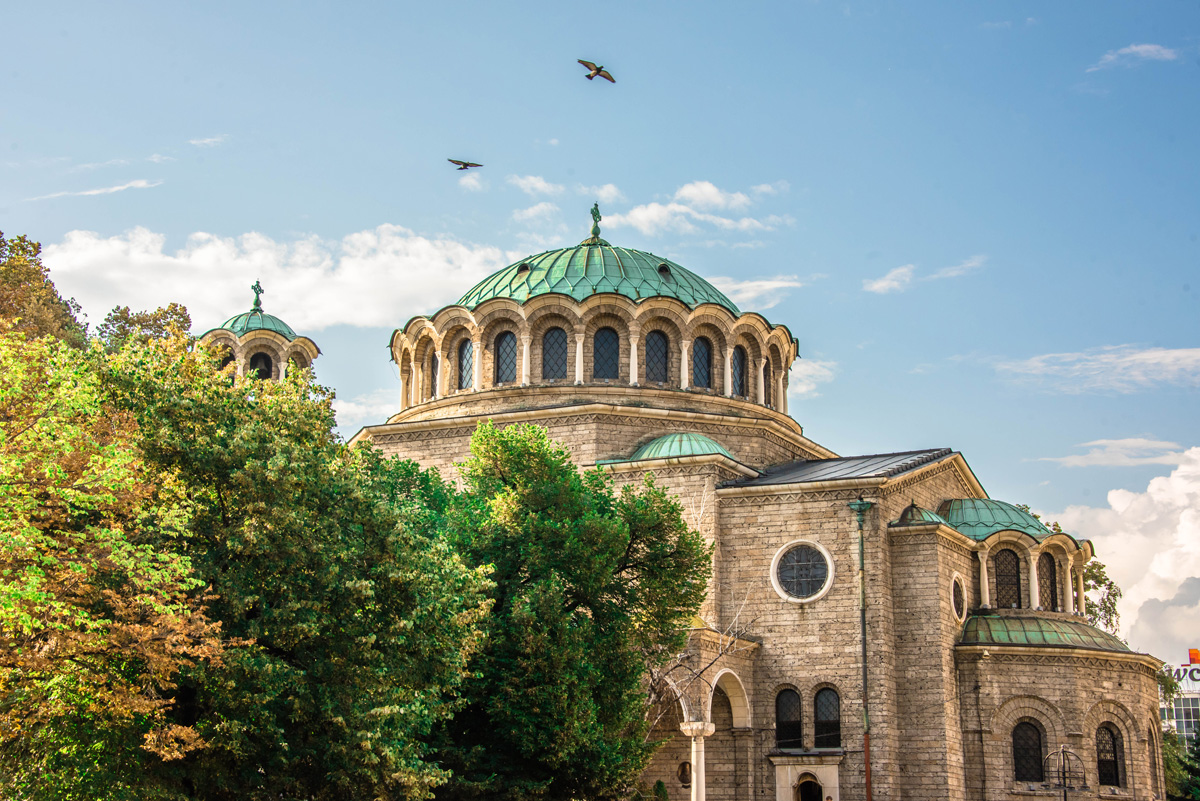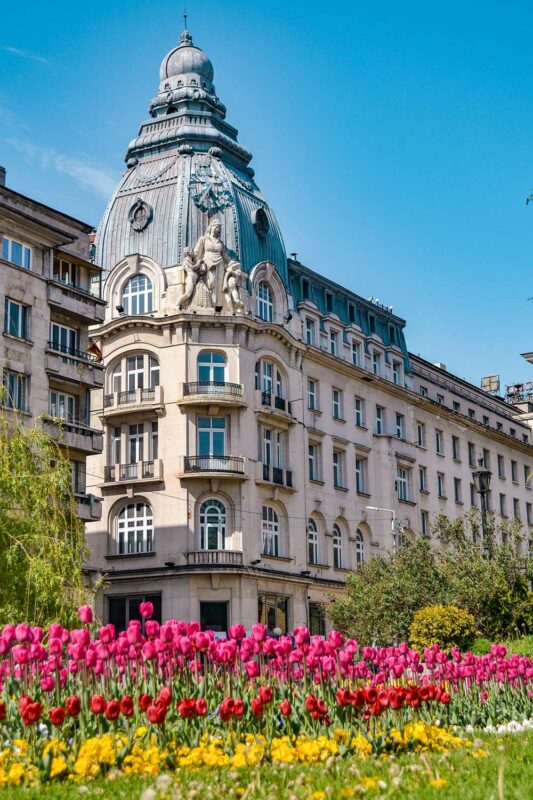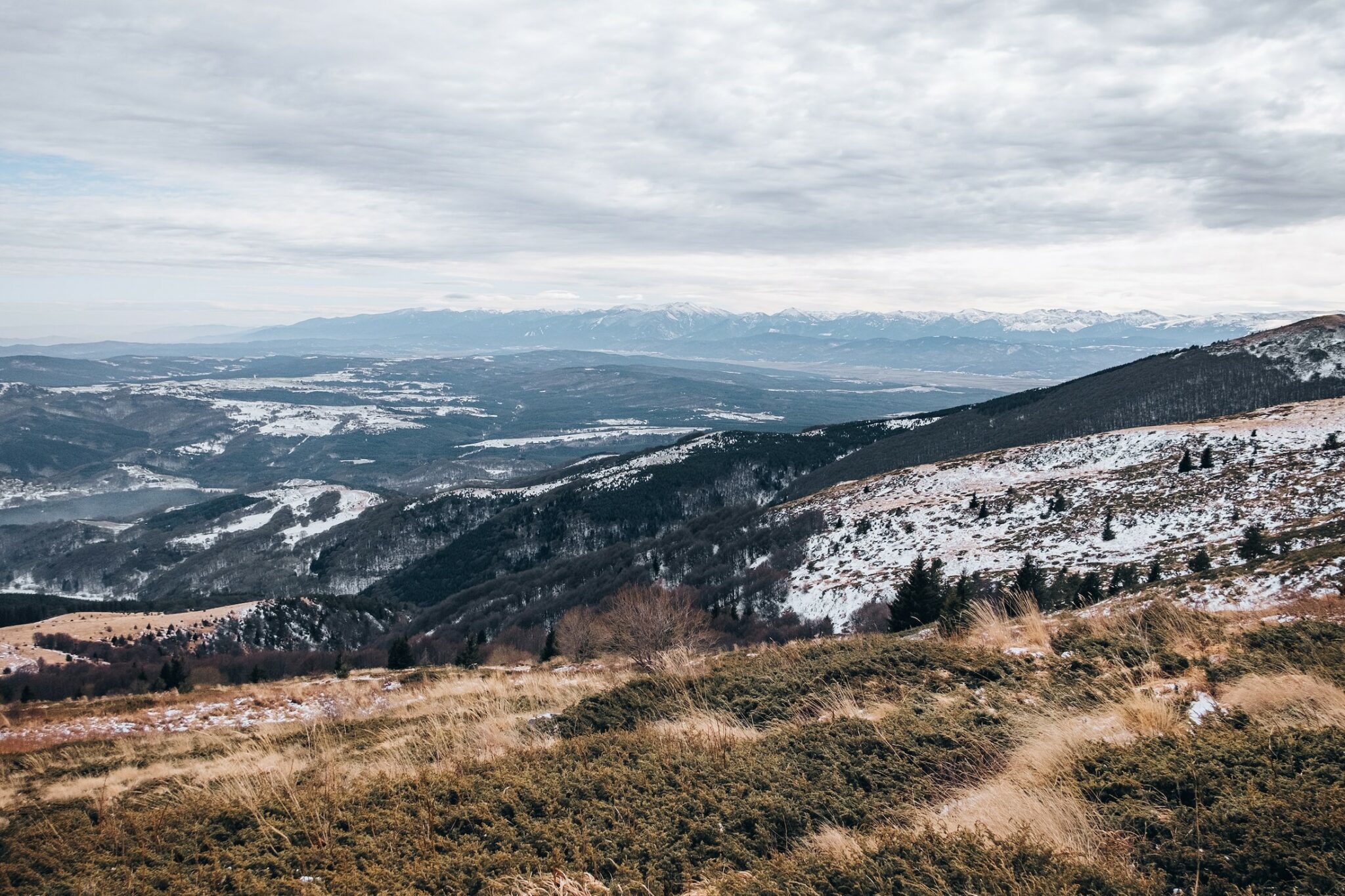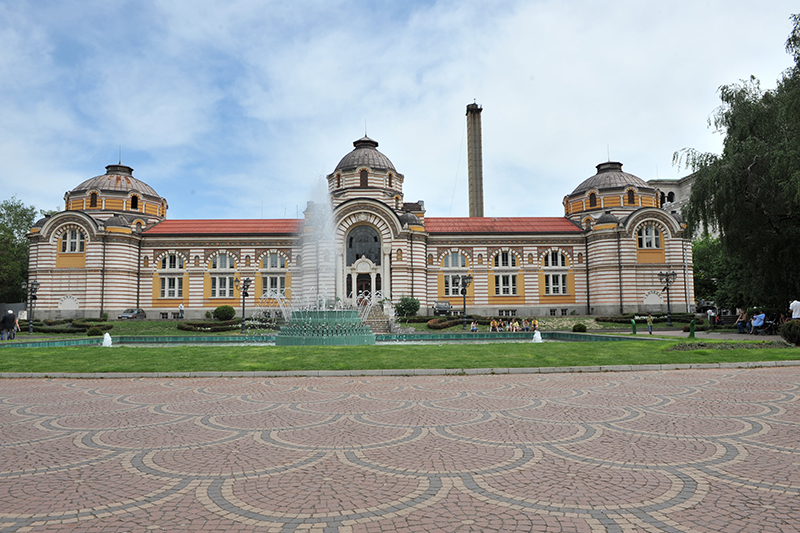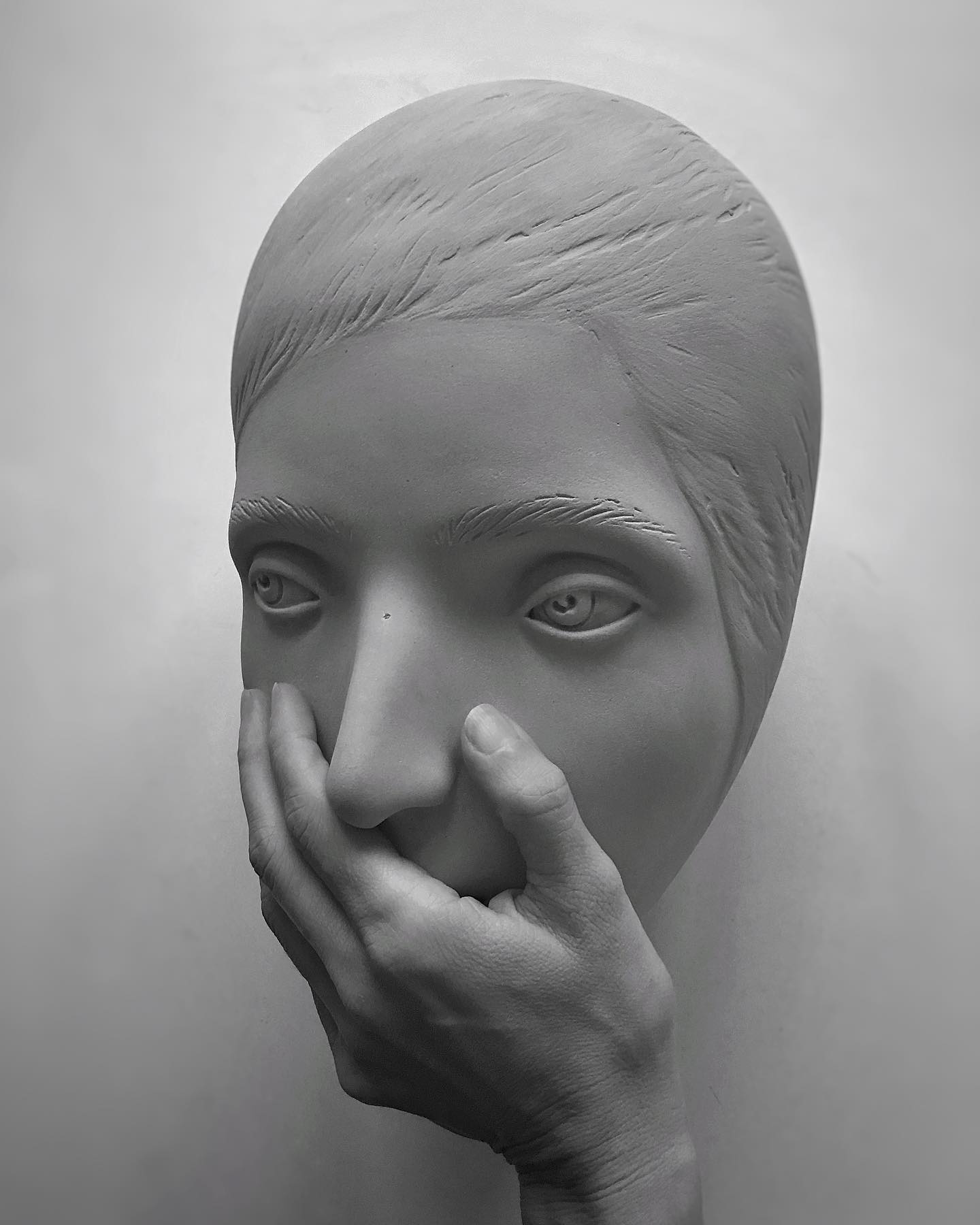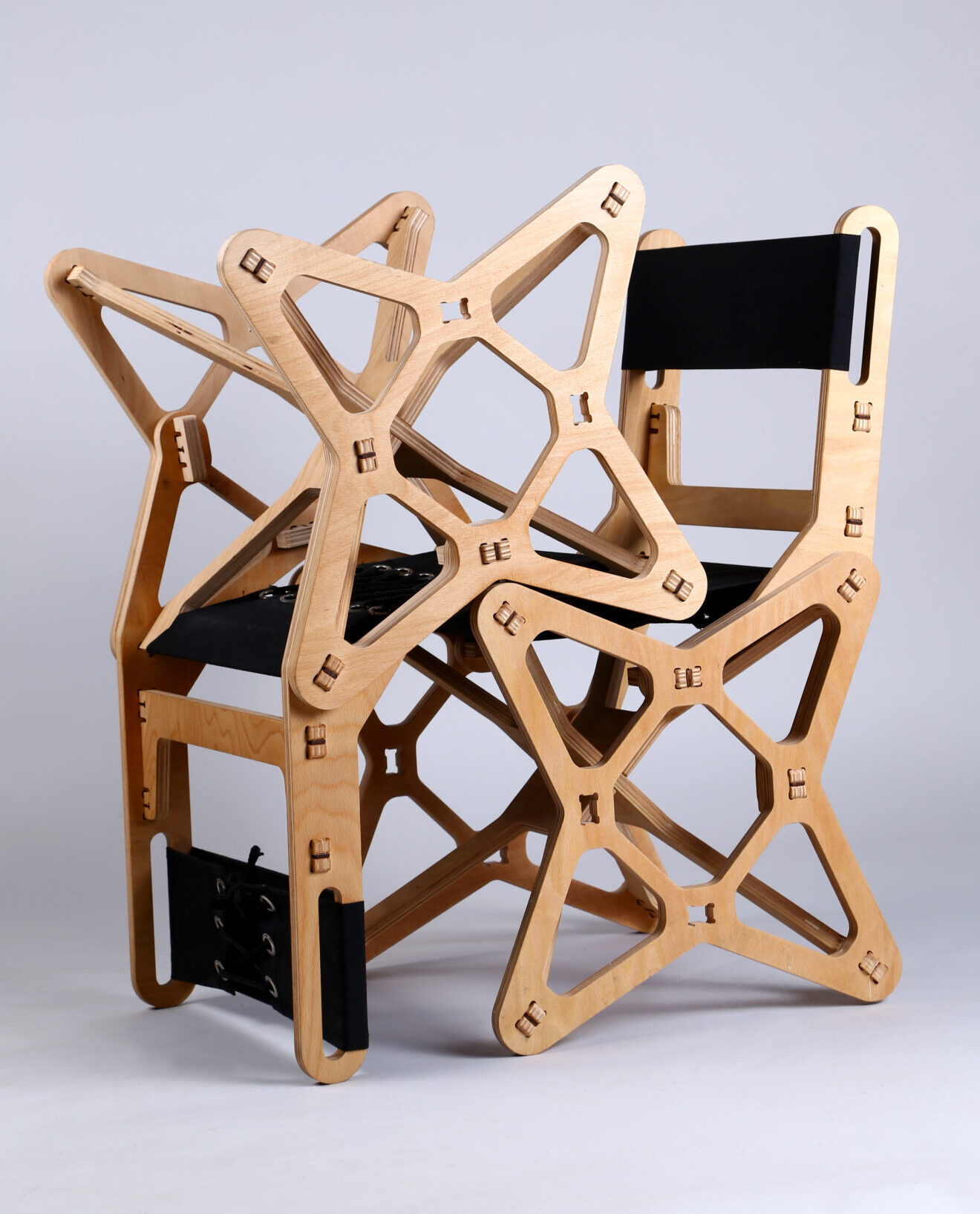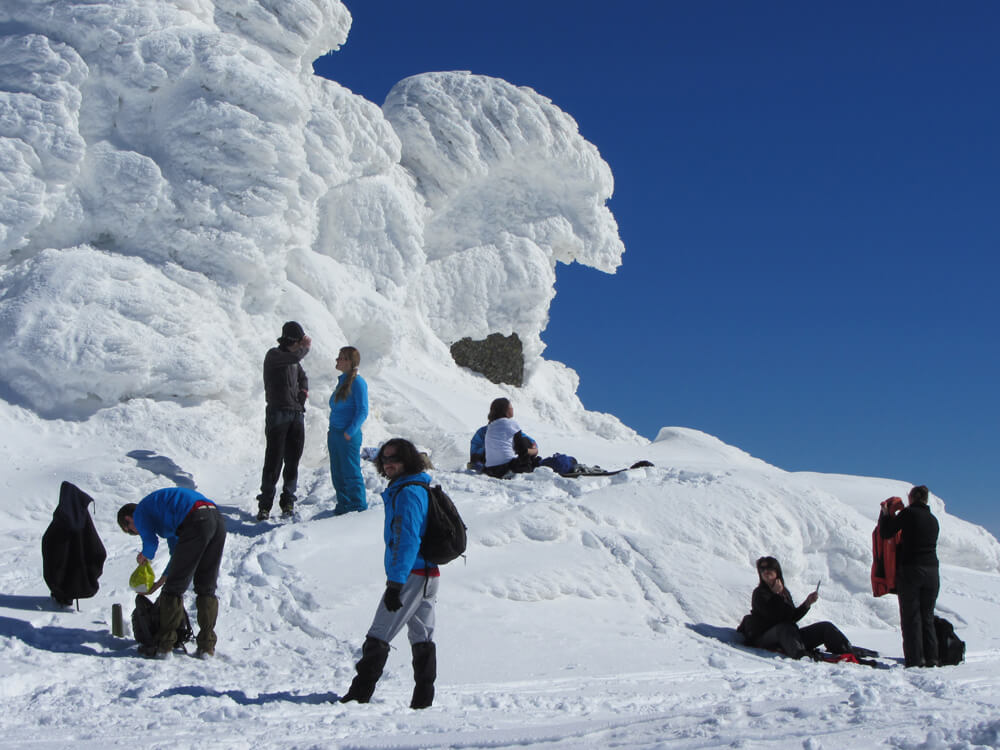Sofia has certainly changed a lot in its 7,000-year history. A stroll through the yellow-stone-paved city center – dotted with ancient Roman ruins and ornate examples of Byzantine, Ottoman and 20th-century European architecture – is a must. During the metro’s construction, archaeologists uncovered Roman ruins that were almost 2000 years old. Back then, Sofia was still called ‘Serdica’. Over the course of time, various rulers have called this city their own – many monuments still bear witness to this today: onion domes, Ottoman mosques, Soviet monuments and many others. They create the eclectic, exotic flair of Sofia.
© Visit Sofia
The Christian Orthodox city is lined with a multitude of churches. It’s not just worth a visit if you’re interested in architecture – the design, architecture and religious symbols are different from the European churches we’re used to. Built in 1912, the Alexander Nevsky Cathedral – one of the latest churches in the city – houses a huge golden chandelier and is one of the largest Orthodox churches in the world.
Right next to it is the oldest church in the city: St Sofia. It is also the church that gave Sofia its name. Situated on a slight hill, it was once allegedly the first thing you saw when you travelled there – which led to the construction of the city in the 15th century. The Sveta Nedelya Cathedral probably has the most beautiful interior: the paintings on the ceilings and walls are stunning. But the streets of Sofia are also the stage for impressive murals. There are only a few in the centre – but they are nevertheless very good.
© Georgi Kalaydzhiev
Just a few bus stops away, the Vitosha Mountains rise up at the gates of the city. Its ski slopes and hiking trails offer recreation not only to Sofia’s residents. But also in the city, away from the boulevards and busy streets, extensive parks and well-tended gardens offer places to relax. In addition to a rich natural landscape, Sofia is home to many of the country’s best museums, galleries, restaurants and clubs. Once discovered, they may entice you to stay even longer.
©visit Sofia
One highlight, for example, is the Sofia Art Fair – a transformative visual and cultural experience that brings together artists, collectors and art lovers from all over the world. Its aim is to showcase the diversity of contemporary Bulgarian art and to promote intercultural dialog and the growth of the Bulgarian art market. Above all, it celebrates unique forms of creative expression. The city’s young, vibrant artistic scene welcomes international artists with open arms: Anyone looking for a place to pursue new ideas is likely to find fertile ground here. The cosmopolitan vibe and quirkiness of Sofia provide the perfect environment.
©Kate Krasautsava
Many artists call it their home. One of them is Jenya Andreeva Adamova, a multidisciplinary artist whose sculptures seem to have stepped out of a magical fairy tale.
© Jenya Adamova
Konstantin Achkov also fulfils his creative ideas here. In his studio, he produces furniture that can be easily assembled using a well-thought-out self-locking system.
© Konstantin Achkov
If you also want to get to know the culinary side of Sofia, you can choose between numerous young, tradition-conscious gastronomic concepts. The local electronic music scene is also becoming increasingly popular – newly founded crews and events play an important role.
© Visit Sofia
